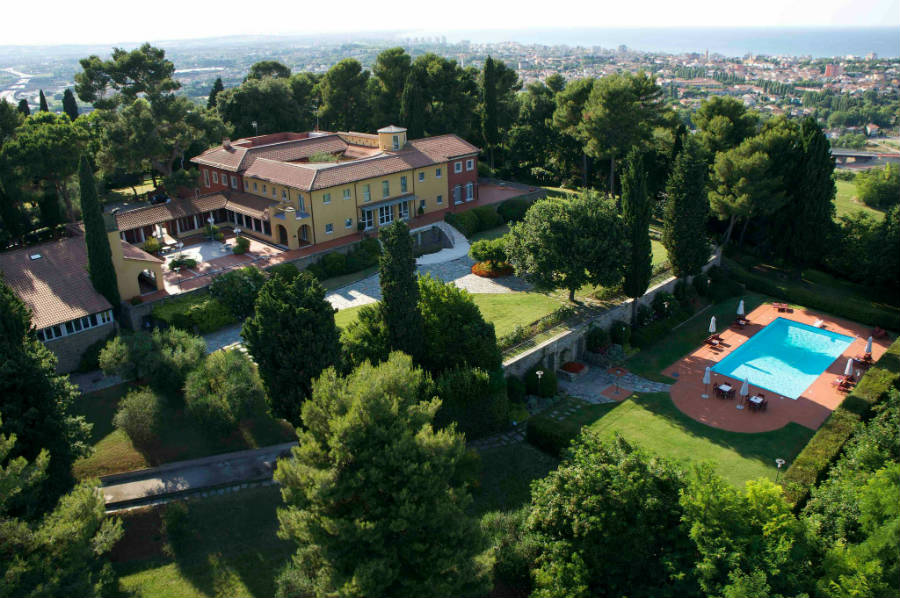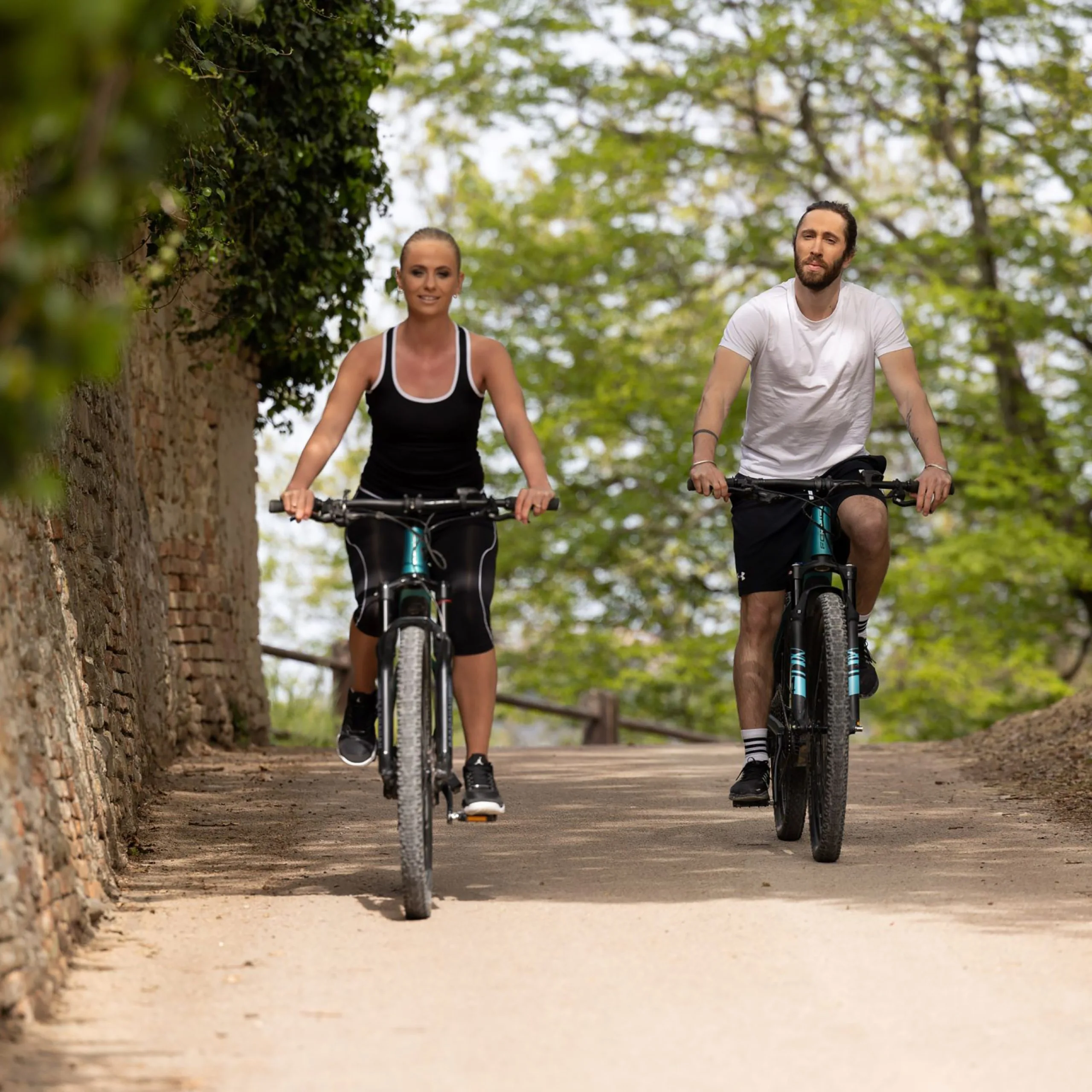The Castle of Gradara is protected by two circles of walls, the outermost of which extends for almost 800 meters, making the impressive structure. Particularly suggestive is the view of the fortress and of the underlying historical village in the nighttime hours. Gradara was, for geographical position, since ancient times a crossroads of trafficking and the Gentiles: during the medieval period the fortress was one of the main theaters of the clashes between the militia loyal to the Papacy and the turbulent households of Marche and Romagna. The fortress has done from the background to the tragic love between Paolo and Francesca, the wife of his brother Gianciotto, sung by Dante in The Divine Comedy.
The fortress is situated on a hill at 142 m a.s.l.: the donjon, the main tower, rises up 30 meters, dominating the whole valley; it is possible to arrive with our gaze up to the Adriatic Sea to the north, or toward the Monte Carpegna, West. The donjon was built around 1150 by the powerful family of De Griffo. Fell into disgrace at the papacy was subtracted their investiture of Cretarie Curte and entrusted to the leader of the Guelphs of Romagna, Malatesta from Verucchio (said Mastin Vecchio), progenitor and founder of the dynasty of the Malatesta family, the great lords of Rimini, Cesena and Pesaro. Were the Malatesta to decide the building of two cinte of walls, erected between the XIII and XIV century, in 1445 Galeazzo Malatesta decided to sell Gradara to Francesco Sforza to 20,000 gold florins, but when Francis came to Gradara to gain possession, Sigismondo Pandolfo Malatesta, a man of arms and mecenate, refused to consegnargliela and also to return the money. In 1446 Francesco Sforza, allied with Federico da Montefeltro besieged Gradara, their army surrounded the fortress and was well stocked with guns, mortars and schioppi. After more than 40 days of battles the fortress seemed destined to fall, but in the end, due to the bad weather and of the imminent arrival of reinforcements of the Malatesta, Francesco Sforza was forced to withdraw from Gradara and the city remained in the hands of Sigismondo. The domain of the Casato on Gradara ended in 1463 when Sigismondo Pandolfo Malatesta, excommunicated by Pope Pius II, came into conflict with another powerful of the time, the Duke Federico da Montefeltro, who besieged Gradara on behalf of the Church. From 1641 Gradara passed under the direct control of the state of the Church through the papal legates, starting with its long agony. When, in 1920, the Zanvettori family bought the castle of Gradara, the castle and the city walls were reduced to a state of ruin. Umberto Zanvettori financed the restoration of the castle and the city walls of the village, entrusting the work to Giuseppe Sacconi, famous architect of the Vittoriano, that, though making interventions more interpretative philological that won the site to its original splendour.
In 1937 the castle was the location for the filming of Luis Trenker Condottieri, inspired by the figure of the soldier of fortune Giovanni dalle Bande Nere. In 1950 there was set Paul and Francesca di Raffaello Matarazzo and some scenes from the film winner of two Oscars prince of foxes, directed by Henry King. In 1961 the village and the interior of the fortress backdrop to the love story between the revolutionary Missirilli Peter and the protagonist of the film Vanina Vanini, Roberto Rossellini. In the eighties there were set two films of the holiday lodging: Same sea same beach (1983) of Angelo Pannacciò and yesterday – sea holidays (1985) by Claudio Risi.
Monday 8.30-14 (ticket closing hours 13)
From Tuesday to Sunday: 8.30-19 (ticket closing hours 18.30)
services: bookshop, wardrobe, restrooms.






